Articles
“JUST WATCH MAH SMOKE” Part 1: Lost at Sea

 Cocoa Kid's father… soon before his disappearance at sea.“JUST WATCH MAH SMOKE,”
Cocoa Kid's father… soon before his disappearance at sea.“JUST WATCH MAH SMOKE,”
Part 1: Lost at Sea
In 1901, a nine-year-old went missing in Georgia. “Negro Boy Disappeared from His Home on July 28,” ran a headline in the Atlanta Constitution. After eleven days his mother was beside herself and the police were still searching. We know that the boy was eventually found because at seventeen he was living with his parents and driving a truck for his father’s transfer company. His name was Lewis Hardwick. It would not be the last time he went missing.
The sea called to him. Hardwick became a sailor living a life of scenic drudgery. In 1914, he was on liberty in Mayaguez, a western seaport in Puerto Rico where mango trees are everywhere and blacks are the majority. While there, he met a young woman who would become his wife. Her name was Myrtice Arroyo. She gave birth to a son on May 2nd 1914. Not long afterwards, Hardwick brought his new family to Atlanta and eventually moved them into a small house -not much more than a shack, and got a job as a porter on Auburn Avenue. The sea, the irresistible sea, called to him again and he enlisted in the United States Navy. The world was at war when he did.
He worked as a mess attendant in the galley of a ship assigned to the South Atlantic. “Messmen” were almost invariably African American in a still-segregated military. Hardwick probably kept to himself, absorbing and avoiding the scuttlebutt of the white officers he served. He took his own meals standing up. His quarters were dank and cramped and it is not difficult to imagine him there, alone, reaching into his sea bag for a book. Pressed between its pages he would find a small photograph that made his heart ache.
…..
The U.S.S. Cyclops was a 522 foot, 19,000 ton steamship commissioned by the Navy after the United States entered World War I. Captain George W. Worley was a German sympathizer notorious for his cantankerous disposition and the routine abuse of his crew. Bound for Baltimore from Brazil with a cargo of manganese ore, the ship made an unauthorized stop at Barbados on March 5th 1918. Worley issued a request ashore to the U.S. Consul for 600 tons of coal and additional supplies, though the reason why is not clear. The Consul distrusted Worley and his suspicions grew when he found many Germanic names on the ship’s manifest.
The next day a long, low blast of the horn signaled the departure of the Cyclops. It raised anchor, left port, and transmitted a message -“Weather fair. All well.”
After March 6th the ship was never seen or heard from again.
No distress call was communicated. No debris was found. No German ships, submarines, or mines were in the area. Not one of the 306 men on board ever turned up anywhere. The Navy launched an exhaustive search at sea and a decade-long investigation to no avail. The U.S.S. Cyclops disappeared in the heart of what is now known as the Bermuda Triangle.
The government released the names of all crew and passengers to American newspapers a month after the disappearance. Hardwick’s eldest son was three years old when his mother frantically scanned the Atlanta Constitution on the morning of April 15th 1918. There on page three, column three, she read the name “Hardwick, Lewis Herbert” among the lost.
This time, he was never found. He was twenty-six years old.
Myrtice Hardwick died soon after that.
These were the first memories of an orphan named for his father, Herbert Lewis Hardwick… Cocoa Kid.
SWEET AUBURN
Antonia Arroyo was his aunt. According to the 1930 U.S. Census, she was born in Puerto Rico (almost certainly in Mayaguez) before moving to Georgia with her husband, a black American by the name of E.A. Robinson. They raised nephews Lewis and his younger brother Jimmy alongside a half-dozen other children in Brunswick before moving into a modest-sized home on Auburn Avenue. Only a stone’s throw away, Martin Luther King Jr. was born on a winter’s day in 1929.
Auburn Avenue is a one mile thoroughfare where the black community built up businesses, organizations (including the Atlanta chapter of the NAACP), a hotel, churches, entertainment spots like the Paramount, and a heritage that prompted John Wesley Dobbs to call it the “richest Negro street in the world.” During the Roaring Twenties, it was the hub of Black Atlanta, where bootstraps and a can-do attitude lifted many. Sweet Auburn, they called it.
When his nephew was a skin-and-bones adolescent in 1928, Robinson took him to a boxing gym. Lewis, as the boy was called, walked in and was greeted by the stench of sweat, resin, and wet leather. He was probably too self-conscious to wince, too spellbound by a spectacle that was, by the standards of the Deep South, remarkable. No hats were in hand here. Strong black men were conditioning themselves for battle, their arms lashing out at shadows. Fists beat drum rhythms on leather bags and pounded sacks hanging on chains. Skip ropes snapped on the floor and whirled so fast he couldn’t see them.
Ropes here surrounded a ring, stretching tautly around a square deal and a fair fight. This was a place where violence was re-imagined in the midst of violence, where self-determination was captured in the fists of the oppressed –in the blessed fists. Blacks weren’t allowed to fight whites in the south yet but that didn’t matter. They could pretend.
And they could make money. They could make money and raise the ire of the whites like Jack Johnson did; or they could make money and raise awareness like Tiger Flowers, whose mansion stretched to heaven over on Simpson Road.
Lewis stood wide-eyed and took it all in. He found what he was looking for here among leather and stink. In no time at all, his skinny arms were splitting lips and stretching necks in sparring sessions. His uncle peered through those ropes with his own neck stretched. Managing this kind of natural talent, he must have mused, would sure beat managing a sandwich shop.
Monday night was fight night at Elk’s Rest, “a colored establishment” on Edgewood Avenue. Promoters jockeyed to put on “all-colored” boxing shows and sold tickets at shops lining Auburn Avenue. Ladies were admitted free with a male escort and refunds were typically offered to anyone not completely satisfied with the card. A section was reserved for the white folks who wanted to attend. Battles royal opened the shows. These unseemly relics from the days of slavery saw eight or twelve African-American boys (“darktown huskies” according to one account), no older than Lewis, wildly swinging at each another for coins tossed into the ring. Sometimes they were blindfolded.
Lewis was a fourteen-year-old featherweight when he had his first professional fight. It was scheduled for four rounds and was over in two. In no time at all, he had cut Kid Moon to ribbons, put D.W. Jackson to sleep, and scored another three knockouts in his first seven bouts.
Then the sea beckoned him as it had his father. The athletic commission probably beckoned him first after finding out he was underage. Lewis and his uncle boarded a ship for Puerto Rico in the summer of 1930. He had at least one fight there in Mayaguez -the city where he was born. It wasn’t until late October when he packed his bags and headed back to the port in San Juan. He lied about his birth date to appear eighteen, gave his address as “310½ Auburn Av. Atlanta Ga.,” and took a seat among forty-seven other passengers as the ship departed for the states. There, on board the S.S. Ponce, alongside Fuentes, Garcia, Gonzalez, and Jimenez sat “Hardwick, Herbert L.” like a fly in Spanish soup.
The Fates were winking at him. The Cyclops was in the news again with another theory purporting to explain its disappearance, and the Ponce sailed into the heart of the Bermuda Triangle.
…..
CHECK BACK SOON FOR PART 2 OF 8.
The photograph opening this essay is found in the Schomburg Center for Research in Black Culture / General Research and Reference Division, New York Public Library. The author is Kelly Miller (1863-1939) and the subject is Lewis H. Hardwick –the father of Cocoa Kid.
The following sources were used for this essay: Atlanta Constitution; the 1910, 1920, and 1930 U.S. Census reports; The Messman Chronicles: African Americans in the U.S. Navy, 1932-1943 by Richard E. Miller; the writings of Gian J. Quasar regarding the disappearance of the U.S.S. Cyclops; Officers and Enlisted Men of the United States Navy Who Lost Their Lives during the World War –published by the Government Printing Office; A Clashing of the Soul: John Hope and the Dilemma of African American Leadership and Black Higher Education in the Early Twentieth Century by Leroy Davis; and the ship manifest of the S.S. Ponce, 1930.
Springs Toledo can be contacted at scalinatella@hotmail.com
Articles
2015 Fight of the Year – Francisco Vargas vs Takashi Miura

The WBC World Super Featherweight title bout between Francisco Vargas and Takashi Miura came on one of the biggest boxing stages of 2015, as the bout served as the HBO pay-per-view’s co-main event on November 21st, in support of Miguel Cotto vs Saul Alvarez.
Miura entered the fight with a (29-2-2) record and he was making the fifth defense of his world title, while Vargas entered the fight with an undefeated mark of (22-0-1) in what was his first world title fight. Both men had a reputation for all-out fighting, with Miura especially earning high praise for his title defense in Mexico where he defeated Sergio Thompson in a fiercely contested battle.
The fight started out hotly contested, and the intensity never let up. Vargas seemed to win the first two rounds, but by the fourth round, Miura seemed to pull ahead, scoring a knock-down and fighting with a lot of confidence. After brawling the first four rounds, Miura appeared to settle into a more technical approach. Rounds 5 and 6 saw the pendulum swing back towards Vargas, as he withstood Miura’s rush to open the fifth round and the sixth round saw both men exchanging hard punches.
The big swinging continued, and though Vargas likely edged Miura in rounds 5 and 6, Vargas’ face was cut in at least two spots and Miura started to assert himself again in rounds 7 and 8. Miura was beginning to grow in confidence while it appeared that Vargas was beginning to slow down, and Miura appeared to hurt Vargas at the end of the 8th round.
Vargas turned the tide again at the start of the ninth round, scoring a knock down with an uppercut and a straight right hand that took Miura’s legs and sent him to the canvas. Purely on instinct, Miura got back up and continued to fight, but Vargas was landing frequently and with force. Referee Tony Weeks stepped in to stop the fight at the halfway point of round 9 as Miura was sustaining a barrage of punches.
Miura still had a minute and a half to survive if he was going to get out of the round, and it was clear that he was not going to stop fighting.
A back and forth battle of wills between two world championship level fighters, Takashi Miura versus “El Bandido” Vargas wins the 2015 Fight of the Year.
WATCH RELATED VIDEOS ON BOXINGCHANNEL.TV
Articles
Jan 9 in Germany – Feigenbutz and De Carolis To Settle Score

This coming Saturday, January 9th, the stage is set at the Baden Arena in Offenburg, Germany for a re-match between Vincent Feigenbutz and Giovanni De Carolis. The highly anticipated re-match is set to air on SAT.1 in Germany, and Feigenbutz will once again be defending his GBU and interim WBA World titles at Super Middleweight.
The first meeting between the two was less than three months ago, on October 17th and that meeting saw Feigenbutz controversially edge De Carolis on the judge’s cards by scores of (115-113, 114-113 and 115-113). De Carolis scored a flash knock down in the opening round, and he appeared to outbox Feigenbutz in the early going, but the 20 year old German champion came on in the later rounds.
The first bout is described as one of the most crowd-pleasing bouts of the year in Germany, and De Carolis and many observers felt that the Italian had done enough to win.
De Carolis told German language website RAN.DE that he was more prepared for the re-match, and that due to the arrogance Feigenbutz displayed in the aftermath of the first fight, he was confident that he had won over some of the audience. Though De Carolis fell short of predicting victory, he promised a re-vamped strategy tailored to what he has learned about Feigenbutz, whom he termed immature and inexperienced.
The stage is set for Feigenbutz vs De Carolis 2, this Saturday January 9th in Offenburg, Germany. If you can get to the live event do it, if not you have SAT.1 in Germany airing the fights, and The Boxing Channel right back here for full results.
Articles
2015 Knock Out of the Year – Saul Alvarez KO’s James Kirkland

On May 9th of 2015, Saul “Canelo” Alvarez delivered a resonant knock-out of James Kirkland on HBO that wins the 2015 KO of the Year.
The knock-out itself came in the third round, after slightly more than two minutes of action. The end came when Alvarez delivered a single, big right hand that caught Kirkland on the jaw and left him flat on his back after spinning to the canvas.Alvarez was clearly the big star heading into the fight. The fight was telecast by HBO for free just one week after the controversial and disappointing Floyd Mayweather Jr. and Manny Pacquiao fight, and Alvarez was under pressure to deliver the type of finish that people were going to talk about. Kirkland was happy to oblige Alvarez, taking it right to Alvarez from the start. Kirkland’s aggression saw him appear to land blows that troubled the young Mexican in the early going. Alvarez played good defense, and he floored Kirkland in the first round, displaying his power and his technique in knocking down an aggressive opponent.
However, Kirkland kept coming at Alvarez and the fight entered the third round with both men working hard and the feeling that the fight would not go the distance. Kirkland continued to move forward, keeping “Canelo” against the ropes and scoring points with a barrage of punches while looking for an opening.
At around the two minute mark, Alvarez landed an uppercut that sent Kirkland to the canvas again. Kirkland got up, but it was clear that he did not have his legs under him. Kirkland was going to try to survive the round, but Alvarez had an opportunity to close out the fight. The question was would he take it?
Alvarez closed in on Kirkland, putting his opponent’s back to the ropes. Kirkland was hurt, but he was still dangerous, pawing with punches and loading up for one big shot.
But it was the big shot “Canelo” threw that ended the night. Kirkland never saw it coming, as he was loading up with a huge right hand of his own. The right Alvarez threw cracked Kirkland in the jaw, and his eyes went blank. His big right hand whizzed harmlessly over the head of a ducking Alvarez, providing the momentum for the spin that left Kirkland prone on the canvas.
Saul “Canelo” Alvarez went on to defeat Miguel Cotto in his second fight of 2015 and he is clearly one of boxing’s biggest stars heading into 2016. On May 9th Alvarez added another reel to his highlight film when he knocked out James Kirkland with the 2015 “Knock Out of the Year”.
Photo by naoki fukuda
-
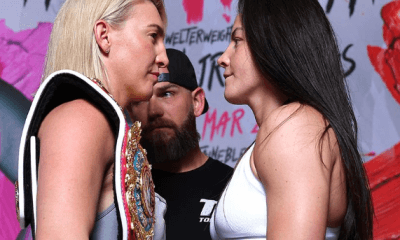
 Featured Articles4 weeks ago
Featured Articles4 weeks agoAvila Perspective, Chap. 319: Rematches in Las Vegas, Cancun and More
-

 Featured Articles4 weeks ago
Featured Articles4 weeks agoRingside at the Fontainebleau where Mikaela Mayer Won her Rematch with Sandy Ryan
-
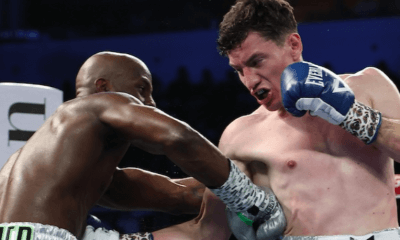
 Featured Articles4 weeks ago
Featured Articles4 weeks agoWilliam Zepeda Edges Past Tevin Farmer in Cancun; Improves to 34-0
-
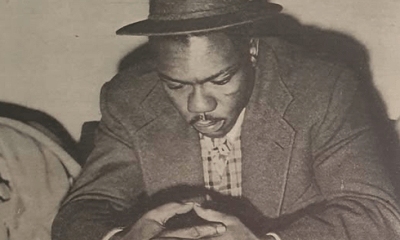
 Featured Articles4 weeks ago
Featured Articles4 weeks agoHistory has Shortchanged Freddie Dawson, One of the Best Boxers of his Era
-
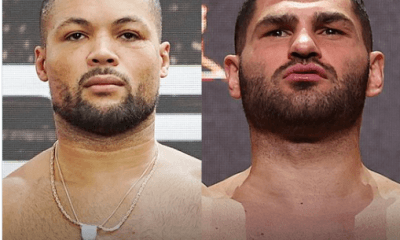
 Featured Articles3 weeks ago
Featured Articles3 weeks agoAvila Perspective, Chap. 320: Women’s Boxing Hall of Fame, Heavyweights and More
-
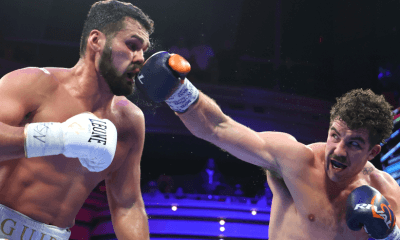
 Featured Articles3 weeks ago
Featured Articles3 weeks agoResults and Recaps from Las Vegas where Richard Torrez Jr Mauled Guido Vianello
-
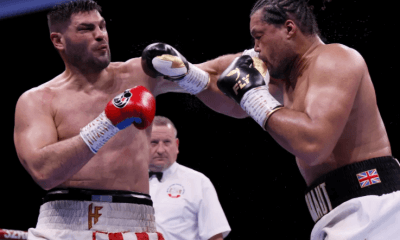
 Featured Articles3 weeks ago
Featured Articles3 weeks agoFilip Hrgovic Defeats Joe Joyce in Manchester
-
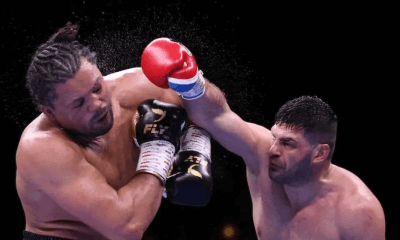
 Featured Articles3 weeks ago
Featured Articles3 weeks agoWeekend Recap and More with the Accent of Heavyweights















